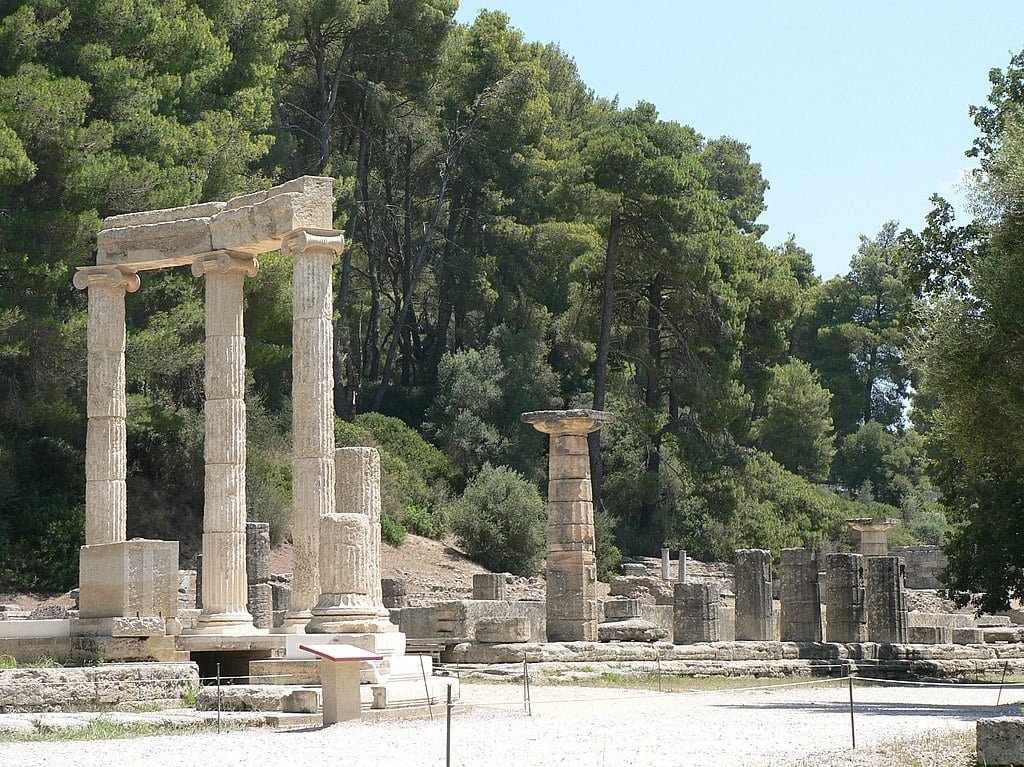
For the first time in 200 years, the magnificent Parthenon on the Acropolis is largely free of exterior scaffolding, offering visitors a breathtaking, unimpeded view of the ancient masterpiece.
“At least two generations have not seen the Parthenon visually free, as scaffolding on its western side was installed twenty years ago. But to see the Parthenon completely free, as it stands today, is something that has not happened for at least 200 years,” Greece’s Minister of Culture Lina Mendoni stated.
The recent removal of the scaffolding, which has obscured at least part of the temple for nearly five decades, follows the completion of a major phase of restoration work. For a short time, visitors passing through the Propylaea can stand and appreciate the matchless harmony and sublime beauty of the structure designed by Pericles’ architects, Iktinos and Kallikrates.
While the current, complete exposure of the Parthenon is temporary—older scaffolds are being replaced by newer, safer structures—this work is nearing its end. The work on the north and south walls, and the east and west facades, including their famous triangular tops (pediments), is drawing to a close.
The final piece of this extensive restoration involves the completion of the west pediment. Once the remaining ancient fragments and modern supports are carefully put in place over the next few months, all scaffolding will be permanently removed.
“This view will last for about a month, perhaps a little longer, because the scaffolding will need to be reinstalled, which is necessary. However, it will be much lighter and aesthetically much closer to the logic of the monument. This is because work must continue on the western side. They will not remain for long, though, only until the end of spring, at most the summer of 2026. At that time, the Parthenon will be fully freed from these scaffolds,” the Greek Minister of Culture stated.
Scaffolding needed for Parthenon’s restoration
The long-running restoration effort, managed by the Acropolis Restoration Service (YSMA), began in the 1970s with a primary focus on protection and preservation. The project was essential due to extensive damage from past, failed restorations; fractures and cracks in the marble; and air pollution, which necessitated moving the original sculptures to a protected environment.
Since then, the scope of the project evolved beyond rescue to a comprehensive restoration program. It has successfully addressed new structural issues resulting from historical events such as fires, explosions, and earthquakes, while also fixing incorrectly-positioned architectural members. The goal has been to enhance the static efficiency of the monuments and improve their “readability” (making the original form easier to understand).
To date, restoration programs for the Erechtheion, the Propylaea, and the Temple of Athena Nike are complete. Work on the Parthenon and the Acropolis Wall remains in progress, ensuring the preservation of these majestic structures for future generations.
The Parthenon
The Parthenon is one of the most iconic structures in the history of Western civilization. It stands in splendor on Acropolis Hill in Athens as it has for 2,500 years. Experts believe that the Parthenon’s construction ingenuity has enabled it to miraculously survive the ravages of time, natural disasters such as earthquakes, and the actions of mankind.
Engineers, architects, and scientists have been wondering for decades how this ingenious structure has stood the test of time and continues to tower majestically over Greece’s capital.
This architectural and engineering wonder, with its height, width, and depth defining the very concept of perfect proportion, has kept its secrets for many centuries since its completion in the year 438 BC.
Related: What Stood on the Acropolis Before the Parthenon?


